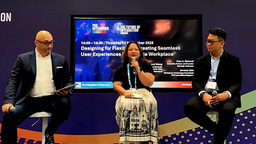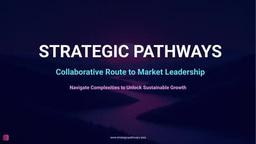Strategic Path: AI Implementation and Infrastructure Converge

Introduction: A Definitive Shift from Hype to Execution
Singapore Tech Week 2025 will be remembered not as just another technology conference, but as a crucial inflection point for the industry in Southeast Asia. The overarching theme, echoed in keynotes, product launches, and conversations on the exhibition floor, was a clear and decisive pivot from the speculative "age of AI hype" to the pragmatic "era of real-world implementation". The dialogue has palpably shifted from what artificial intelligence could do to what it is doing, moving beyond potential to demonstrate proven value in tangible business applications.
This maturation of AI is not happening in a vacuum. A powerful symbiosis has emerged as the defining narrative of the industry's next chapter: AI innovation is no longer a standalone concept but is deeply intertwined with, and critically dependent upon, the massive and sustainable scaling of the data center infrastructure that powers it. The computational demands of enterprise-grade AI have catalyzed an unprecedented build-out of the digital bedrock, and in turn, innovations in that bedrock are enabling the next wave of intelligent applications.
This convergence was the undeniable takeaway from the week's events.
This analysis will explore the two pillars of this new reality as witnessed at Singapore Tech Week. First, it will examine how AI is delivering tangible, proven value through specialized industry tools, mature and reliable platforms, and secure collaborative frameworks. Second, it will detail the foundational role of the data center industry, focusing on its unprecedented growth, the colossal investments fueling it, and the sustainable innovations required for its future. Finally, it will synthesize these two pillars, arguing that their convergence marks a new strategic reality for businesses and a foundational moment for Southeast Asia's digital future.
Part I: AI Gets to Work: From Potential to Proven Value
The most significant trend on display was the tangible application of AI to solve specific, real-world business problems. The industry is rapidly moving past general-purpose novelties and into an era of specialized, high-value tools and platforms that are reliable, secure, and deeply integrated into professional workflows.
The New Toolkit: AI for Specific Industry Challenges
The launch of Gevme's Coplanner, an AI assistant for intelligent event planning, serves as a prime exhibit of this trend. Rather than a horizontal AI that performs generic tasks, Coplanner is a vertical solution engineered to address the specific, high-friction pain points of a particular industry. This represents a significant step in the maturation of applied AI.
Event professionals, often operating with smaller teams and under immense pressure, spend a disproportionate amount of their time on manual, repetitive work. This includes reformatting content for different channels, chasing status updates, and struggling to extract meaningful insights from siloed data platforms. Early-generation AI tools, while promising, often failed to alleviate this burden, producing generic content that required heavy editing and lacked the necessary context to be truly useful.
Coplanner is designed to move beyond simple task automation and function as an "event-specific AI assistant" built with deep domain expertise. Its core features demonstrate a sophisticated understanding of the event planning workflow. It delivers context-aware content, generating agendas, speaker biographies, and session descriptions that are tailored to the specific event type, audience, and format, making them ready to publish with minimal intervention. The platform’s automation capabilities are particularly notable; it can ingest unstructured data, such as a marketing brochure, and automatically construct a fully structured event agenda, synchronizing any subsequent updates across all channels to eliminate the version control issues that plague event teams. Furthermore, its natural language analytics interface allows planners to ask complex questions in plain English and receive instant, custom-built dashboards. For example, "Show me ticket sales by type and the revenue collected". This unlocks critical data that was previously difficult and time-consuming to access, transforming it into actionable intelligence.
The emergence of tools like Coplanner signals a crucial market evolution. The initial wave of generative AI provided powerful but horizontal capabilities, such as general text generation. While revolutionary, these tools lacked the specific context, vocabulary, and workflow knowledge to be maximally efficient for specialized professions. Coplanner represents the next phase, where AI is not an add-on but is deeply embedded into a specific industry's operational fabric. This indicates that the competitive advantage in the AI application market is shifting. It is no longer sufficient to simply possess AI capabilities; the true differentiator is having an AI that understands the intricate nuances, terminology, and unique challenges of a specific domain, whether it be event planning, legal discovery, or medical diagnostics.
We can expect an explosion of similar "Coplanner-like" solutions across every industry, transforming AI from a novelty into an indispensable professional tool.
The economic value is migrating from the foundational models to the sophisticated application layer, which has been fine-tuned with proprietary data and deep workflow intelligence.
The Platform Shift: OpenAIs Vision for Embedded, Real-World AI
The keynote and fireside chat from OpenAI's Andy Brown, Head of Go-to-Market for APAC, was a focal point of the week, deliberately steering the conversation away from future potential and towards the "tangible ways" and "real-world value" that the company's latest models are already delivering to organizations. The discussion around the new GPT-5 model centered less on its speculative capabilities and more on its readiness for enterprise-grade deployment.
A critical threshold for widespread business adoption is reliability, and the advancements in GPT-5 directly address this. The model is reportedly around 45% less likely to produce factual errors than its predecessor, GPT-4o, and up to six times less likely to "hallucinate" when responding to open-ended, fact-seeking questions. This marked improvement in factual reliability is a non-negotiable requirement for enterprises that depend on accuracy for their operations. This is complemented by state-of-the-art performance in business-critical domains, including complex coding tasks, debugging, and the generation of structured professional writing such as reports, memos, and emails.
Beyond the model's core improvements, OpenAI signaled a profound strategic pivot with the introduction of "Apps inside ChatGPT". This vision reframes the chatbot from a simple query-and-response tool into a comprehensive platform; an operating system where third-party software runs natively within the conversational interface. Live demonstrations featuring partners like Canva, Zillow, and Spotify illustrated this new paradigm, where a user could design a poster and then pivot to a real estate map without ever leaving the chat thread. To support this ecosystem, the introduction of the Apps SDK and AgentKit provides the essential "plumbing" for organizations. These tools allow enterprises to build, manage, and govern their own complex, long-running AI workflows with the necessary tracing, security guardrails, and observability required for production environments.
This strategic direction has far-reaching implications for the entire software industry. Historically, software has been organized as a collection of discrete applications, each with its own distinct user interface. The "Apps inside ChatGPT" model fundamentally challenges this structure. It suggests a future where the primary user interface for a vast array of professional and consumer tasks will be the conversational thread. Instead of opening separate applications for different functions, a user will be able to orchestrate complex, multi-step tasks seamlessly within a single, context-aware conversation. This de-emphasizes the traditional graphical user interface in favor of natural language as the primary method of interaction and orchestration. This will force a strategic re-evaluation for all SaaS companies. Their future may not lie in being standalone applications, but rather in becoming "connectors" or "agents" that plug into larger conversational ecosystems hosted by platforms like OpenAI. The competition for user engagement will shift from the desktop icon to the agent registry, fundamentally altering the landscape of software development and distribution.
The Collaborative Shield: Securing the AI Revolution
The rapid adoption of AI is occurring within a complex and escalating threat landscape, making security a paramount concern. The official launch of the Asia Information Sharing and Analysis Center (Asia-ISAC) during Cyber Security World Asia was a landmark announcement, addressing this challenge head-on.
An ISAC is a non-profit, member-driven organization that provides a trusted framework for gathering and sharing information on cyber threats, facilitating two-way intelligence flow between the private and public sectors. The need for such a center in Asia is acute. The Asia-Pacific region experienced the highest number of cyberattacks globally in 2024, accounting for 34% of all investigated incidents, with economic losses from cybercrime in the region reaching an estimated $1.7 trillion in 2023. The widespread deployment of AI technologies further complicates this environment, expanding the potential attack surface and introducing novel risks such as sophisticated prompt injection attacks, data exfiltration through autonomous AI agents, and the generation of highly convincing phishing content.
The mission of Asia-ISAC is to "unite Asia's private sector through trusted collaboration" and to "reduce the cost and impact of cyber attacks". Crucially, its mandate is cross-industry, a recognition that cyber threats are not confined to specific sectors and that a collective defense is the only effective strategy. A core objective of the center is to enable "safe and secure AI adoption," providing a platform for organizations to share threat intelligence related to AI systems and build a common defense against emerging attack vectors.
The establishment of Asia-ISAC represents a significant evolution in the perception of cybersecurity, from a defensive cost center to an offensive business enabler. Historically, cybersecurity has often been viewed as a necessary but burdensome operational expense, a protective measure against potential losses. The framing of Asia-ISAC's mission, however, is centered on unlocking business innovation and enabling growth. This reframing is essential in the age of AI. Many organizations are hesitant to deploy powerful AI agents that connect to sensitive internal data and critical systems without a high degree of confidence in the security framework. By creating a trusted, confidential environment for sharing timely and actionable threat intelligence - particularly on new, AI-specific attacks - Asia-ISAC lowers the perceived risk of AI adoption. It provides the "collaborative shield" that gives companies the confidence to innovate more aggressively with transformative technologies. Proactive, collaborative security is therefore no longer just about preventing loss; it is about creating the stable and predictable conditions necessary for technological advancement and sustained competitive advantage. It has become a prerequisite for participation in the AI-driven economy.
Part II: The Bedrock of Intelligence: Powering the Future, Sustainably
The abstract world of artificial intelligence is built upon a very physical foundation of silicon, power, and cooling. The revolution in AI applications is being matched, and in many ways enabled, by a parallel revolution in the data center industry, which is undergoing a period of unprecedented expansion, investment, and technological innovation to meet the voracious computational demands of the new era.
The Sustainability Imperative: Cooling the Compute Revolution
The exponential growth of data centers presents a formidable environmental and logistical challenge. These facilities are incredibly power-hungry; in a dense urban environment like Singapore, they already account for an estimated 7% of the nation's total electricity consumption, with cooling systems alone responsible for up to 40% of that load.The widespread adoption of AI workloads, which rely on high-density clusters of power-intensive GPUs, is dramatically exacerbating this issue. This reality places immense pressure on critical industry metrics like Power Usage Effectiveness (PUE) and Water Use Efficiency (WUE) and poses a direct challenge to national sustainability goals such as Singapore's Green Plan 2030.
Addressing this challenge was a central theme, highlighted by ECOLAB's major announcement: the launch of its 3D TRASAR™ Technology for Direct-to-Chip Liquid Cooling in Southeast Asia. This technology represents a fundamental shift away from traditional, energy-intensive air cooling toward a much more efficient liquid-based approach that tackles the heat problem at its source. The system provides continuous, real-time monitoring of key coolant health indicators - including temperature, pH, flow rates, and glycol concentration - directly at the server chip level. This is critically important because the continuous operation of GPUs at high temperatures can cause the glycol in the coolant to degrade. These degradation byproducts can foster microbiological growth and increase corrosion risk, leading to clogged filters and cold plates that severely impede thermal rejection and can cause catastrophic damage to high-value server equipment. By precisely maintaining optimal coolant health, the 3D TRASAR system ensures maximum thermal conductivity, allowing chips to run at peak performance without overheating. This directly improves PUE by reducing the energy wasted on cooling and contributes to better WUE within the broader facility system.
The focus on such advanced cooling solutions reveals a critical reality of the AI era: sustainability is no longer a corporate social responsibility initiative but has become a core engineering and economic constraint on AI scaling. The growth of AI is not limited by algorithms or ideas, but by the hard physical constraints of power availability and heat dissipation. It is not possible to simply add more GPUs to a data center without a viable and scalable strategy to power and cool them. Consequently, innovations like ECOLAB's direct-to-chip cooling are not merely "green" options; they are fundamental enablers of continued progress in high-performance computing. They unlock the ability to pack more computational power into a smaller physical and energy footprint. In jurisdictions like Singapore, which have tight controls on land and power resources, technologies that dramatically improve PUE and WUE are not optional - they represent the only viable path to continued growth in the data center sector. The future viability and valuation of data center operators, and the technology giants that rely on them, will be increasingly tied to their sustainability and efficiency metrics. The most efficient operators will possess a significant competitive advantage, able to offer more compute per dollar and per watt.
A Region on the Rise: The Unprecedented Scale of Data Center Investment
The palpable energy at Data Centre World Asia was a direct reflection of the market's explosive growth. The event's physical expansion, with a reported 75% increase in floor space, mirrors the hyper-growth of the industry it serves. This is not anecdotal; the numbers paint a clear picture of a region rapidly becoming a global hub for digital infrastructure.
The Southeast Asian data center market is in the midst of a historic boom, with over $37 billion being invested to add an additional 8GW of power capacity to the region's portfolio. Globally, data center construction is at record levels, a surge driven almost entirely by the insatiable demand for AI-ready infrastructure.
This growth is anchored by colossal, multi-billion-dollar commitments from the world's largest technology companies, who view Singapore as a critical strategic hub.
Amazon Web Services (AWS) is leading this charge, having pledged an additional S$12 billion (approximately $9 billion) for the period of 2024-2028. This new commitment will double its total investment in the country to over S$23 billion and is projected to contribute S$23.7 billion to Singapore's GDP by 2028. Similarly, Google has committed $5 billion to its technical infrastructure in the nation, completing major expansions of its data center campus in Jurong West to serve as a critical node for its Asia-Pacific operations. Microsoft is another key player, actively participating in Singapore's data center pilot program to expand its own capacity.This flood of capital from private hyperscalers is complemented by strategic public investment, as detailed in the table below.

This combination of massive private investment and strategic public funding has transformed Singapore into one of the most dynamic and critical data center markets in the world, establishing the physical bedrock required for the region's AI-powered future.
Part III: The Great Convergence: Where Intelligence Meets Infrastructure
The parallel evolutions of applied artificial intelligence and digital infrastructure are no longer separate stories. Singapore Tech Week 2025 made it clear that these two domains have fused into a single, interdependent ecosystem. This convergence is the most important strategic takeaway from the event, signaling a fundamental realignment of market priorities and business strategy.
A Rebranding, A Realignment
Perhaps the most potent symbol of this convergence was the official rebranding of the long-standing "Cloud Expo Asia" to the new "Cloud & AI Infrastructure Asia". This is far more than a simple marketing change. An event of this scale, which serves as a barometer for the entire regional technology industry, does not undertake such a rebranding lightly. It is a deliberate response to a fundamental shift in market reality and customer priorities. The new name is an explicit acknowledgment that artificial intelligence is now the primary driver of demand for both cloud services and the physical infrastructure that underpins them.
This realignment was reflected in the very structure and content of the event. The conference program was curated to bring together previously distinct audiences: cloud architects, infrastructure engineers, AI practitioners, and business decision-makers are no longer in separate conversations. The dialogue has moved beyond discussing "cloud" or "AI" in isolation.
The central question now is how to design, build, and manage agile, intelligent, and future-ready digital infrastructure that is purpose-built to handle the unique demands of AI workloads, from high-density compute and storage to low-latency networking.
This convergence signals the end of the siloed IT strategy. In the past, a company's AI strategy, often led by a Chief Data Officer or Head of Innovation, could be developed in relative isolation from its infrastructure strategy, which was the domain of the CIO or Head of Infrastructure. The rebranding of a major industry event is a clear market signal that this separation is no longer tenable. A decision to train a large-scale AI model, for example, is no longer just an R&D project; it is a multi-million-dollar infrastructure decision that involves complex choices about GPU allocation, high-performance networking, advanced cooling solutions, and power sourcing. Conversely, strategic decisions about data center location, design, and power procurement are now directly influenced by the need to support high-density AI clusters and secure access to sustainable energy sources. AI strategy is infrastructure strategy, and vice versa.
C-suite leaders must now approach these domains as a single, integrated function to succeed.
A company's ability to innovate with AI is now directly constrained or enabled by the sophistication, scalability, and sustainability of its underlying digital infrastructure.
Conclusion: Charting the Course for Southeast Asias Digital Future
The keynotes have ended and the exhibition halls have emptied, but the trends crystallized at Singapore Tech Week 2025 will define the technological and economic landscape of Southeast Asia for years to come. The event marked a definitive transition for the industry, leaving behind the speculative hype of artificial intelligence and entering a new, pragmatic era of implementation.
This shift is being enabled and accelerated by a historic, multi-billion-dollar build-out of the sustainable and powerful digital infrastructure that forms the bedrock of the AI revolution.
These two powerful currents - applied AI and foundational infrastructure - have now converged into a single, strategic imperative for every organization.
The announcements and innovations witnessed are not isolated events but are the foundational building blocks for the next decade of digital transformation and economic growth in the region. The massive capital investments from global hyperscalers, the pioneering work in sustainable data center technologies, and the establishment of collaborative security frameworks are creating a robust ecosystem for innovation.
The question for business leaders is no longer if they should adopt AI, but how they will build the integrated, sustainable, and secure infrastructure required to compete in this new era of applied intelligence. The future isn't just intelligent; it's being built on a powerful new foundation, and the blueprints for that foundation were on full display in Singapore.
Follow me and subscribe to receive more information on Artificial and Human Intelligence!
-
Xchange Advocates are recognized AV/IT industry thought leaders and influencers. We invite you to connect with them and follow their activity across the community as they offer valuable insights and expertise while advocating for and building awareness of the AV industry.






Please sign in or register for FREE
If you are a registered user on AVIXA Xchange, please sign in